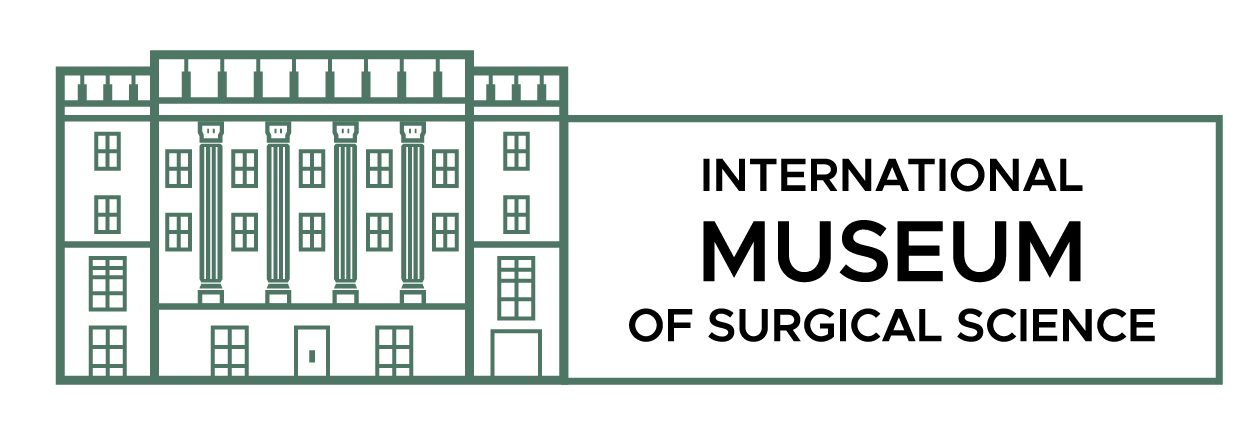Published by James R. Wilke
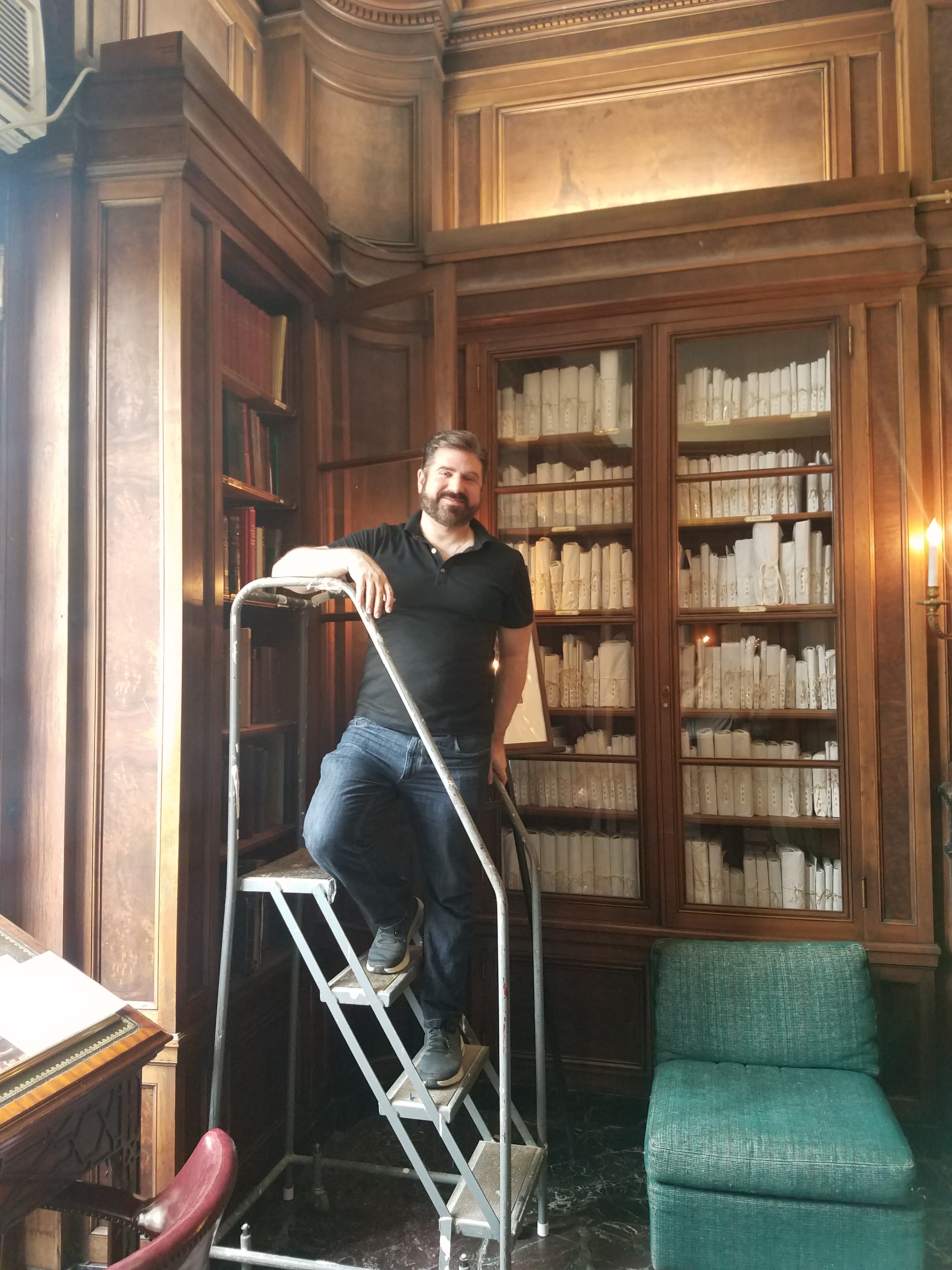
James conducts research in The Library at the IMSS, 05/18/2022. Photo by Shannon Fox.
Allow me to introduce myself. My name is James, and by passion I am a creative writer and multi-disciplinary artist (theatrical/film/music/visual art). Along with many people in the United States over the past few years, I found myself reprioritizing my life during the Covid Pandemic. After years of focusing on a business day job and money, I have begun to let my latent artistic and creative goals take the driver’s seat on the road of my life again. Goals that had sat patiently and quietly in the backseat for much of the 2010s. Or maybe lost in a corner of the trunk.
Sure, I had pursued the arts full force in my youth, but had let those dreams go a bit as the pressures of the world pushed me toward other things. But with the reassessment of life that Covid brought on, and the discovery of a fantastic artist residency opportunity at the International Museum of Surgical Science (IMSS), I found myself in 2021 digging into beloved works I had started and applying for a residency. Fortunately, (with overwhelming gratitude to the staff of the IMSS), I was selected and am now taking a period of time to focus full force on the arts again.
It’s been about three months now visiting the IMSS as an artist-in-residence, researching the history of another very impactful pandemic, smallpox, along with other related historical information that informs my writing. I’ve been working on three projects, absorbing all that the museum and its knowledgeable staff have to offer. The first is a play set in 1600s early America, when smallpox was an ever-present danger, with readings coming up for audiences. It is an adaptation of Toni Morrison’s historical novel, A Mercy. The second is my first fantasy novel, also deriving from that period and place in history. And the third is living out another dream of mine, to create/curate an exhibit at a museum – of which mine will focus on the smallpox pandemic’s impact on America and the world. But none of these projects come without growing pains and lessons learned along the way. To share, here are five unique things I’ve learned at the IMSS this spring:
Lesson 1. Pushing beyond your fear of failure is a requirement for success.
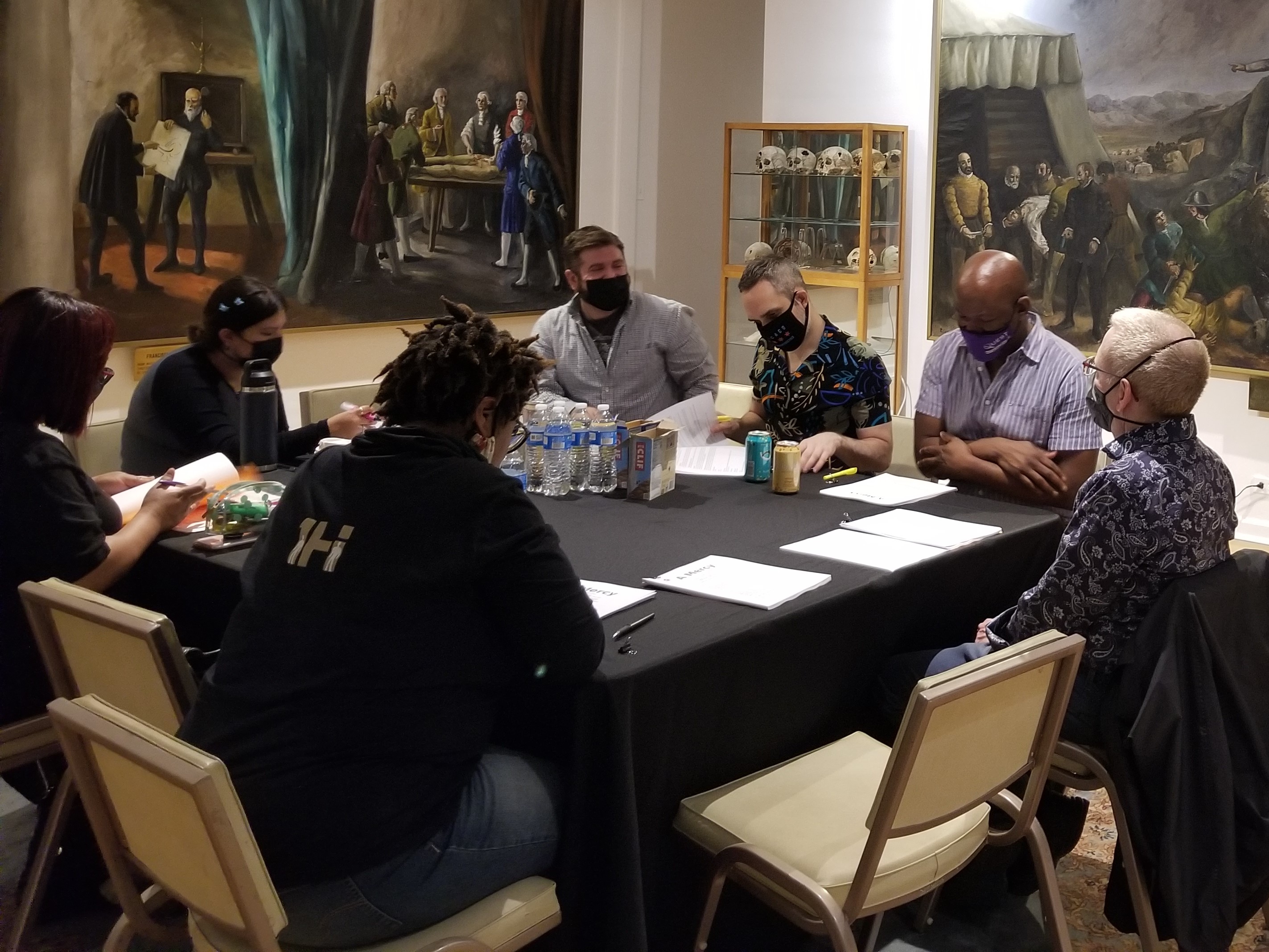
Cold reading of A Mercy in the Spanish Mural room at the International Museum of Surgical Science. James, playwright, seen center, 05/15/2022. Photo by Kristofer Luck.
When I first considered whether to submit for the IMSS’ artist residency, the application process looked daunting. I had never applied for a residency before. Was I a fool, as a writer/playwright, to think I could compete in a league with accomplished visual artists who already had museum show backgrounds? Yes, I’d had some success in the arts in the past, but that was years ago. Luckily, I belong to a writers’ group that meets regularly, with whom I shared my potential submission last fall and got feedback. Once I did that, I couldn’t turn back. I had already made a commitment to my fellow writers that I was applying to this residency. My fear of letting them down outweighed my fear of rejection. And the result was, well, great!
Another test of fear just recently happened. A few weekends ago, I had a cold reading at the museum of the first draft of my new play, A Mercy. I assembled a group of creative friends I could trust to meet in one of the IMSS’ beautiful mural rooms and read through the play together to get their feedback. To be honest, the cold reading was a thrilling, fun, and… okay, terrifying experience! Just asking people to participate was scary, opening myself up to rejection, to people potentially not being interested. And then, what if the play turned out to be a disaster or an utter bore? Would my friends be too embarrassed to speak to me again? Would I be excommunicated from the halls of science at the IMSS immediately for creating a piece of perplexing drivel? Luckily, such fears were overblown. In truth, the outcome was good. I got a lot of solid feedback and encouragement from my friends to hone the next draft of my play for an audience.
Lesson 2. History is weirder (and cooler!) than you realize.
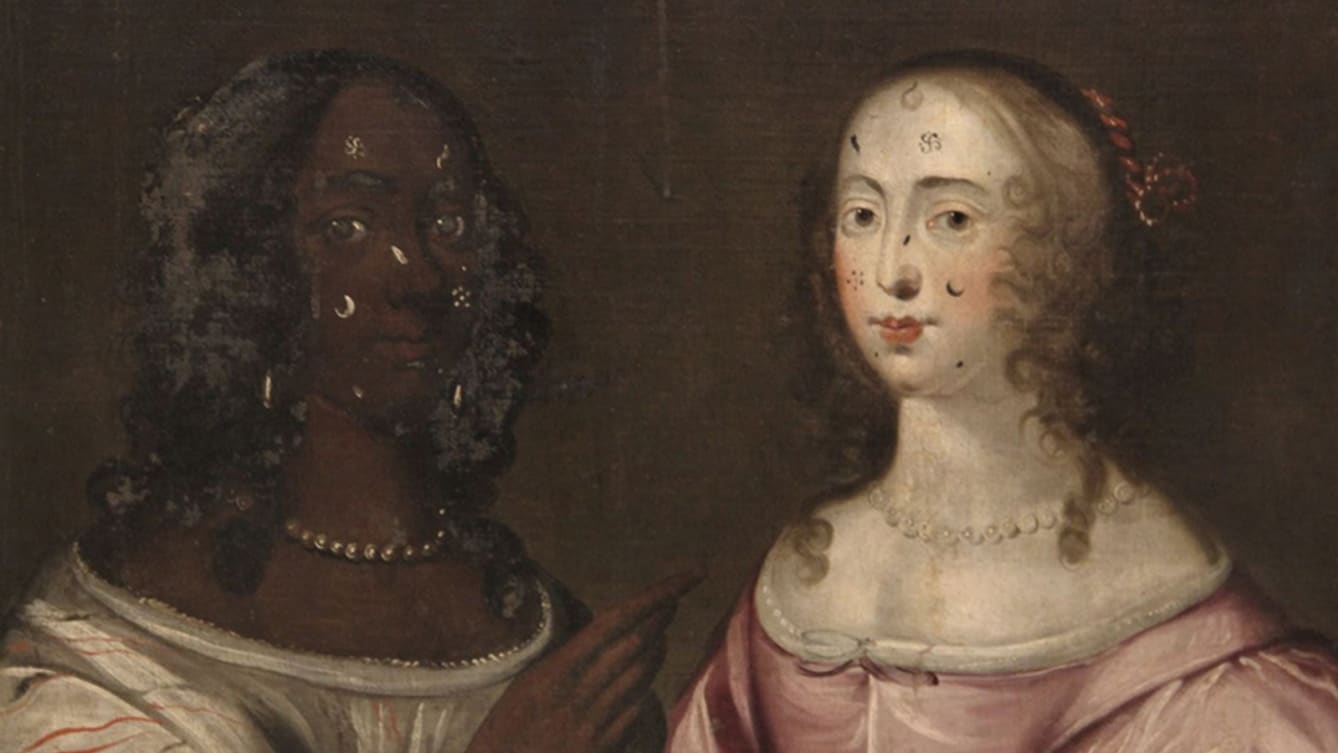
British School. Allegorical Painting of Two Ladies wearing Beauty Patches (1650s). Photo courtesy of gov.uk.
Until you really dig into it, you don’t know history. It will always surprise you. Part of what makes the IMSS so interesting is that the museum doesn’t so much focus on today’s medical science, but really the history of it. And when you have to research the history of a disease like smallpox (or any medical/scientific pursuit), what you come to find may be more astonishing than the cut-and-dry facts we know today. For instance, ‘germ theory’, the idea that there are bacteria that cause disease, was only truly developed and accepted in the last half of the 19th century. In all human history before that, the notions of what caused diseases and how to treat them was widely varied and may even seem superstitious today. Viruses weren’t even discovered until the 1890s! Though vaccination for smallpox became commonplace long before, and inoculation methods developed centuries earlier, nobody knew why they worked.
Another fascinating example of smallpox history I discovered was a European fashion trend that really took off in the 1600s. Because surviving smallpox often meant permanent scars and pockmarks on one’s face, people resorted not just to white face paint and powders to cover their blemishes (often containing harmful lead) but also to silk taffeta or velvet beauty patches. These face patches – which could hide damaged skin underneath – were actually made to stand out, ranging from simple black dots to hearts, stars, crescent moons, geometric shapes, and even miniature silhouettes. What a creative way to turn blemishes into a beauty statement!
Lesson 3. You probably won’t ‘get it right’ the first time around.
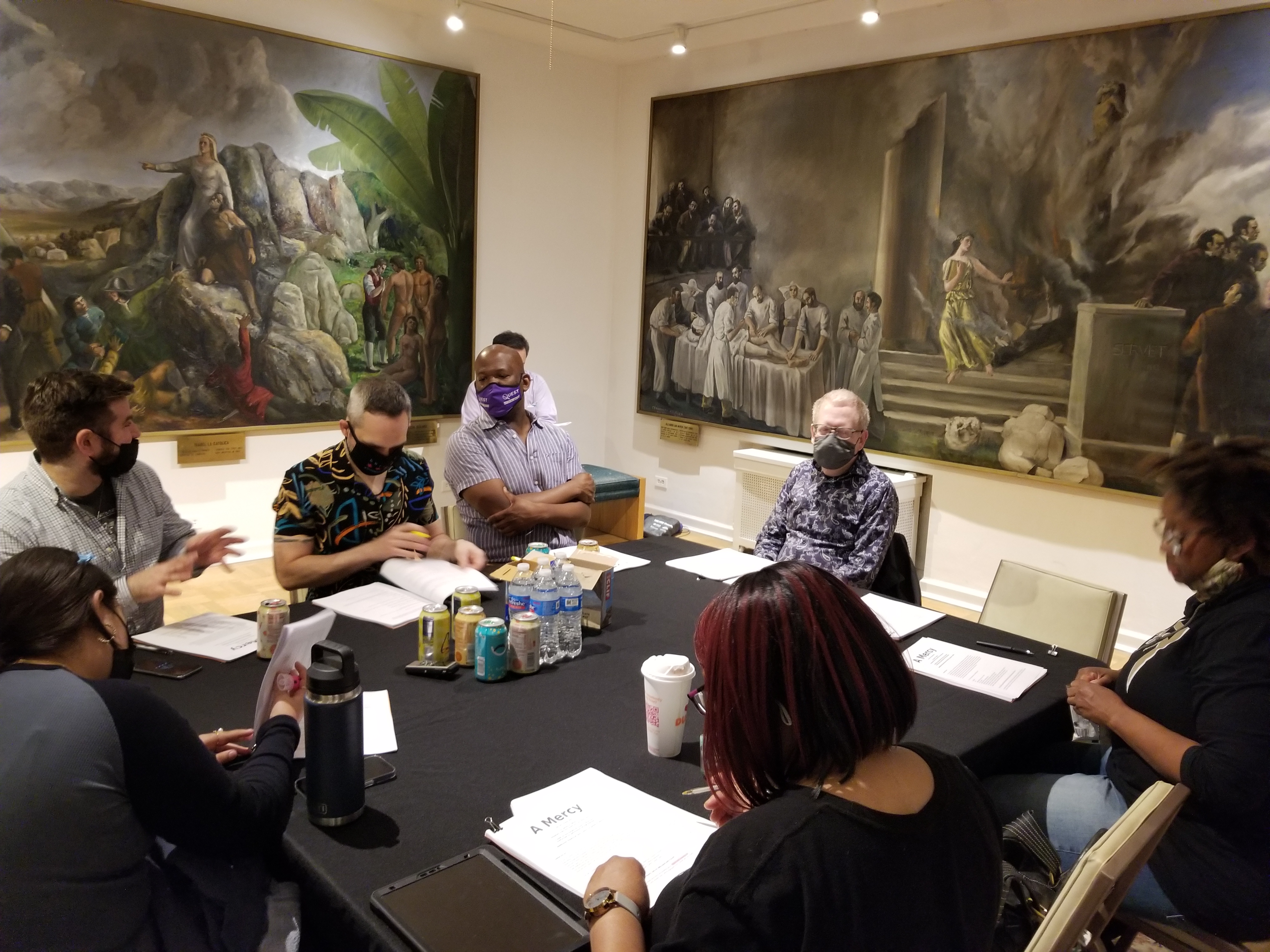
Cold reading of A Mercy in the Spanish Mural room at the International Museum of Surgical Science. James, playwright, seen far left, 05/15/2022. Photo by Kristofer Luck.
Going back to the above-mentioned cold reading of the first draft of my play, I would be remiss not to mention that, aside from fear of failure, in contrast, I also ‘suffered’ from a few delusions of grandeur about how good my play might be. To be fair, I knew and accepted it would probably need revising. That’s why I had scheduled the cold reading with nearly two months still to go for edits before actors would present a reading of it to an audience. But…
Before the cold reading, a perhaps too hopeful part of me imagined my friends overwhelmed with delectation at my first draft. I envisaged fetching a box of tissues as friends fought back tears of impassioned connection to the words. Raucous peals of laughter, gasps of shock and awe, and exclamations of ‘Bravo, that is one of the best pieces of theatre we’ve ever read!’ Well, sigh, in real life… I did get some positive reactions about how solid the play was for just a first draft. But the words ‘first draft’ were clearly emphasized, with plenty of additional emphasis as to revision ideas. But hey, I’m thankful to my friends for their honesty and am better for it. And now, it’s time to revise, revise, revise!
Lesson 4. Sometimes you have to cut out parts you really like to make a better whole.
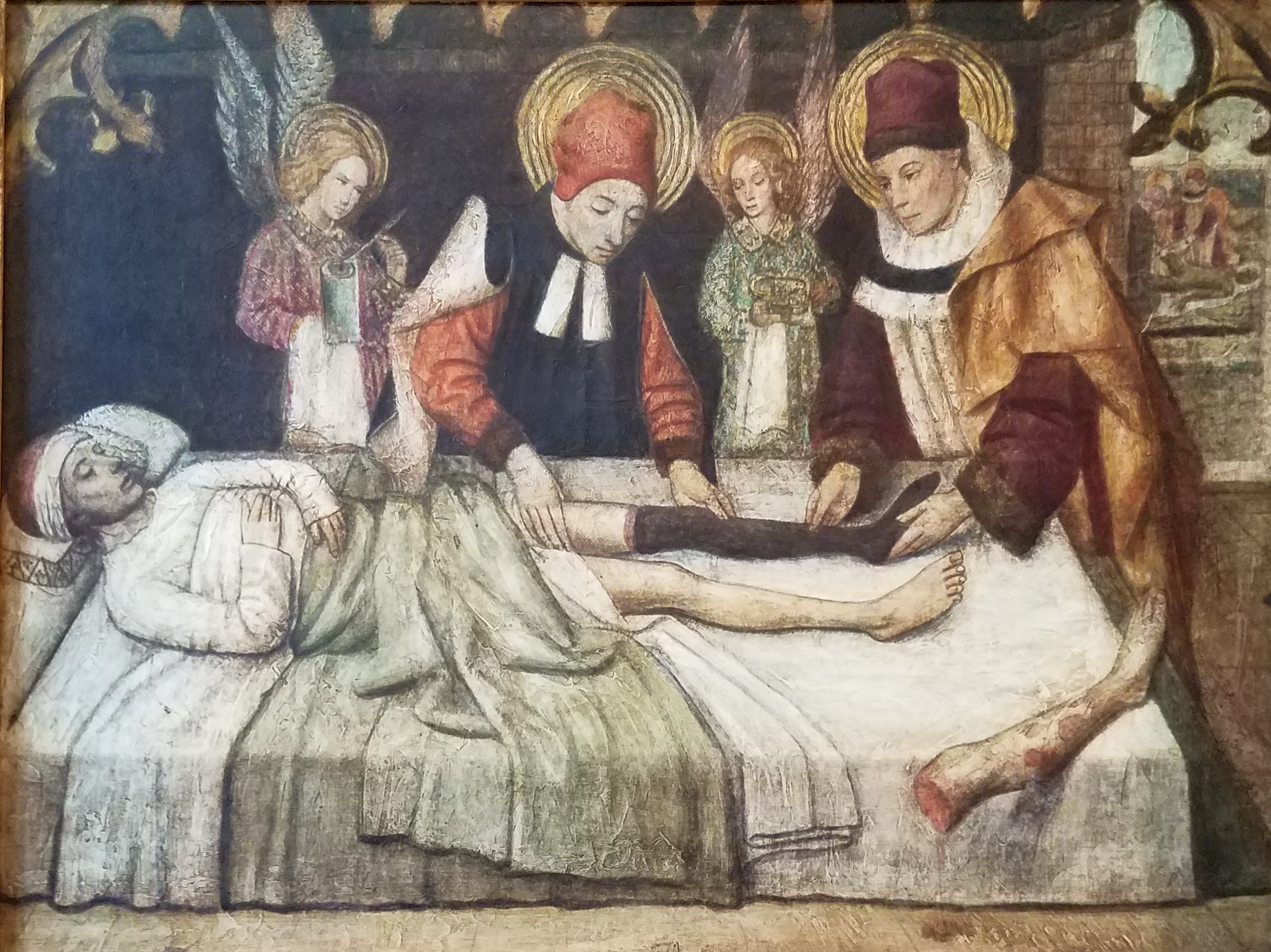
Reproduction in The Library at the International Museum of Surgical Science of a detail from the Altarpiece of Saints Abdon and Sennen (1458) by Jaume Huguet; Terrassa Museum. Photo by James R. Wilke.
In adapting A Mercy to the stage, there were some really fun explorations – okay, whole scenes – I had written for some of Toni Morrison’s supporting characters. Yet when we had the cold reading, I got feedback that others found these scenes to be, well, good but unnecessary. “You know that scene with Lina and the French soldiers? I think you could just cut that.” “Oh, and that whole ship sequence with Rebekka? I liked it. But if the story is really about Florens, I don’t understand what the point of it is.”
What I found when gathering a group together and reading aloud, was that some side scenes just weren’t necessary in the context of my whole play. Maybe they were engaging on their own, maybe even funny enough to make people laugh out loud. Yet they veered too far from the main story. So, as many a writer (and surgeon) has had to do before me, I had to admit to myself that the ‘body’ of my play would be healthier without them. Thus, out they go. Yet while cutting out scenes from my play is painful, I look around the museum and remind myself – hey, at least it’s not as rough as getting a leg amputated!
Lesson 5. The IMSS is a rich, constantly flowing resource for artists of all kinds.
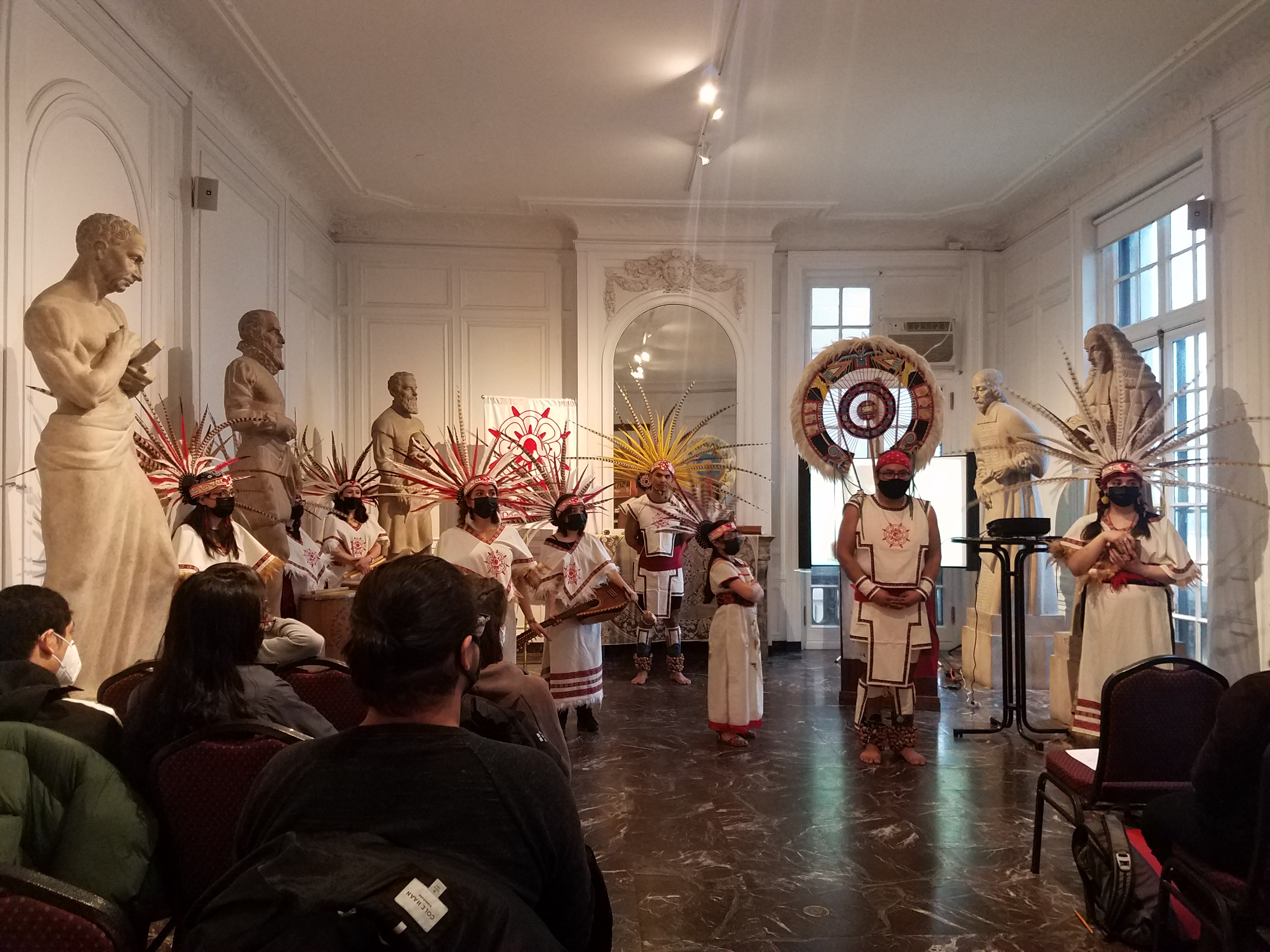
Henry Cervantes and the Xochitl-Quetzal community dance group perform at the IMSS, 04/08/2022. Photo by James R. Wilke.
During my time at the IMSS, perhaps the most surprising lesson learned has been to realize just how artistically and culturally rich this organization is. A lot of people might visit the IMSS’ Gilded Age mansion, with its marbled halls, old medical artifacts, muralled walls, and view it as a static museum that never changes. They might assume one or two visits is all one needs to take in everything it has to offer. But that couldn’t be further from the truth!
In my brief time researching and writing at the IMSS, I have witnessed how rooms of the museum constantly change with new exhibits and artworks. Even more exciting, I have attended book launches, lectures, play readings, dance and musical performances, much of which are completely free and open to the public. And through these events, I’ve learned things that are enriching my creative works and made acquaintances (and hopefully some lasting friendships) with fellow writers, book publishers, performers, historians, visual artists, and even magicians.
The museum staff continually partners with people in the arts and sciences to bring engaging and impactful new experiences to the public and supports artists in a broad variety of disciplines. They even open their library to the work of students and scholars. In truth, if you enjoy the arts or pursue them, you’ll want to become a member of the IMSS and make sure to sign up for their emails and newsletters to catch all the latest programming. It will be worth it!
James R. Wilke is the Museum’s Spring 2022 Artist in Residence. He is an accomplished writer and creative artist with multiple produced original plays & musicals under his belt, as well as writings in national publications, and a regional Emmy Award for Outstanding Director. He is also a certified public accountant. Read more about his exhibition here.
